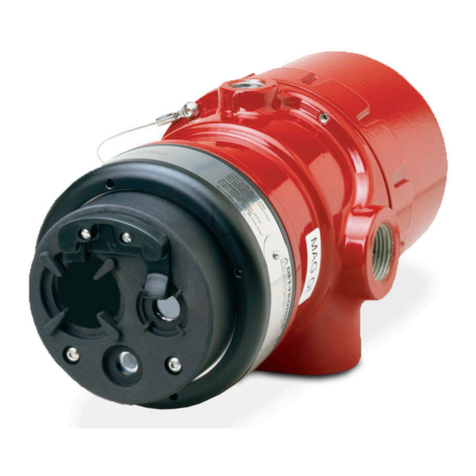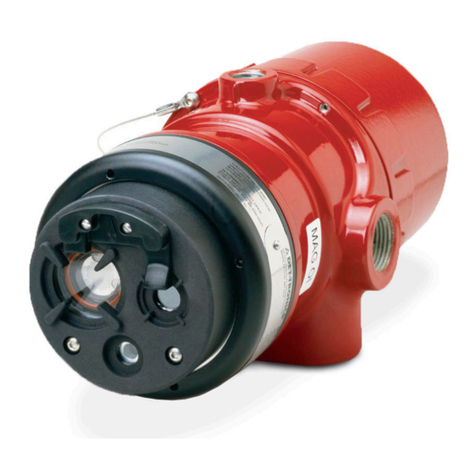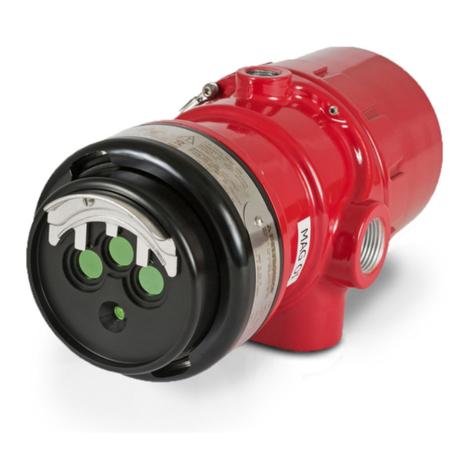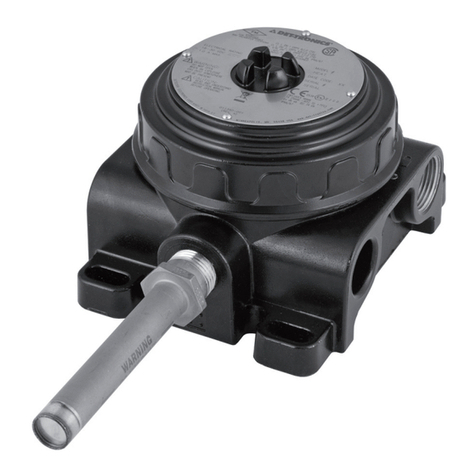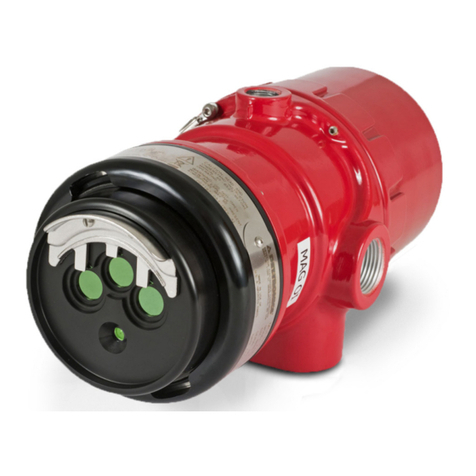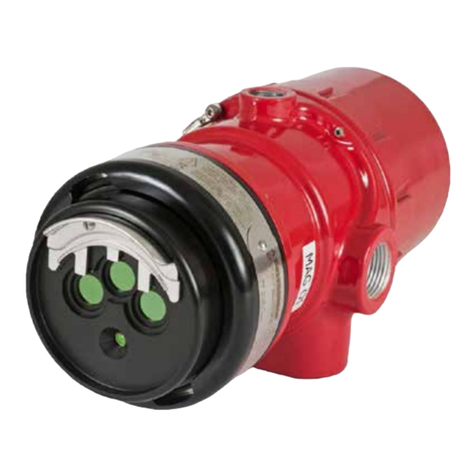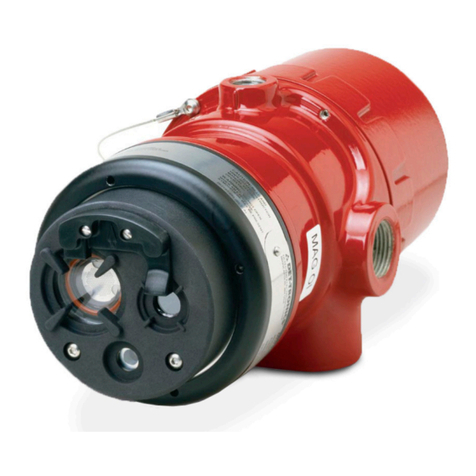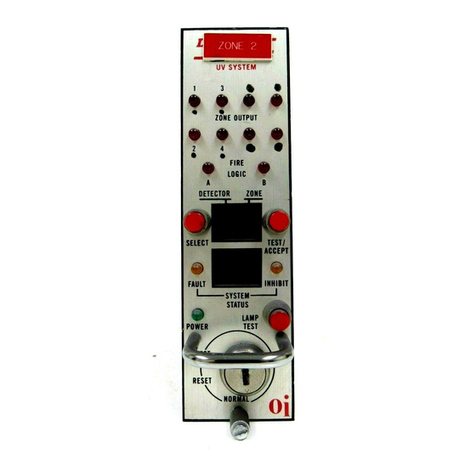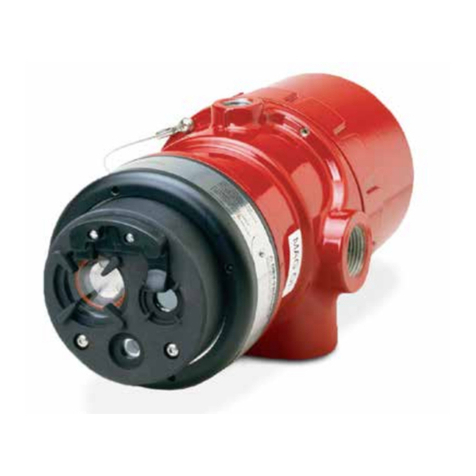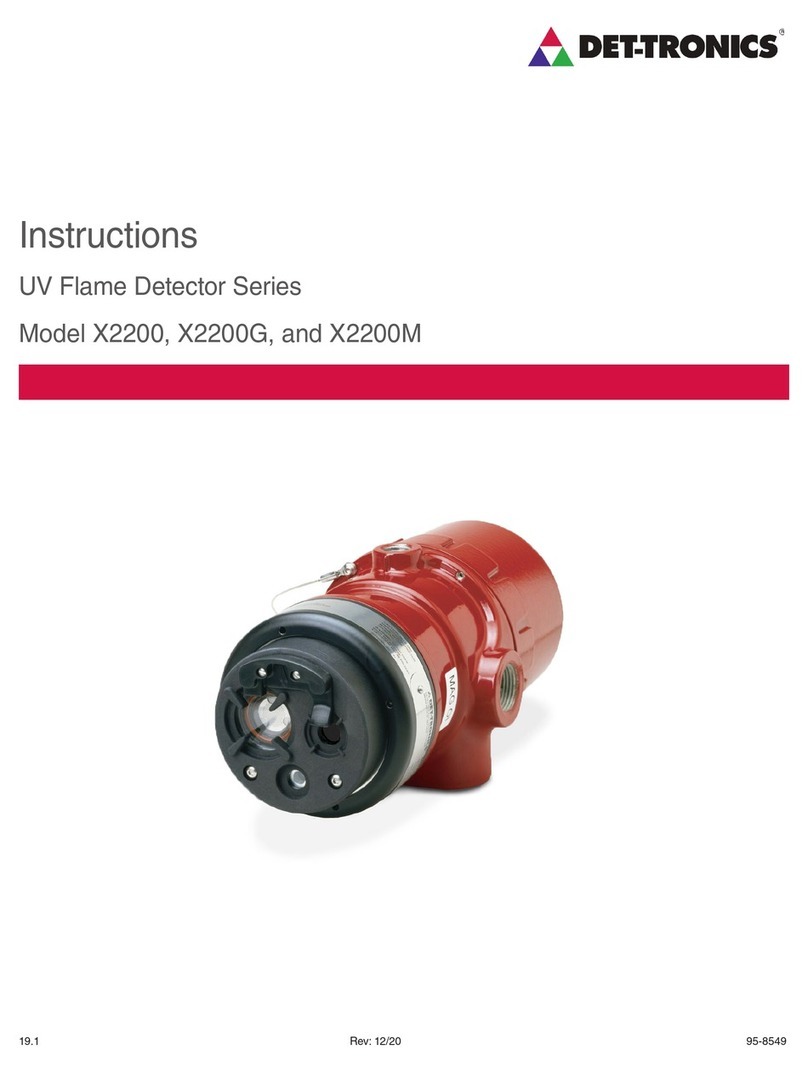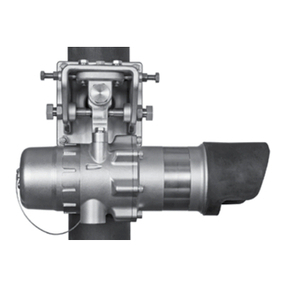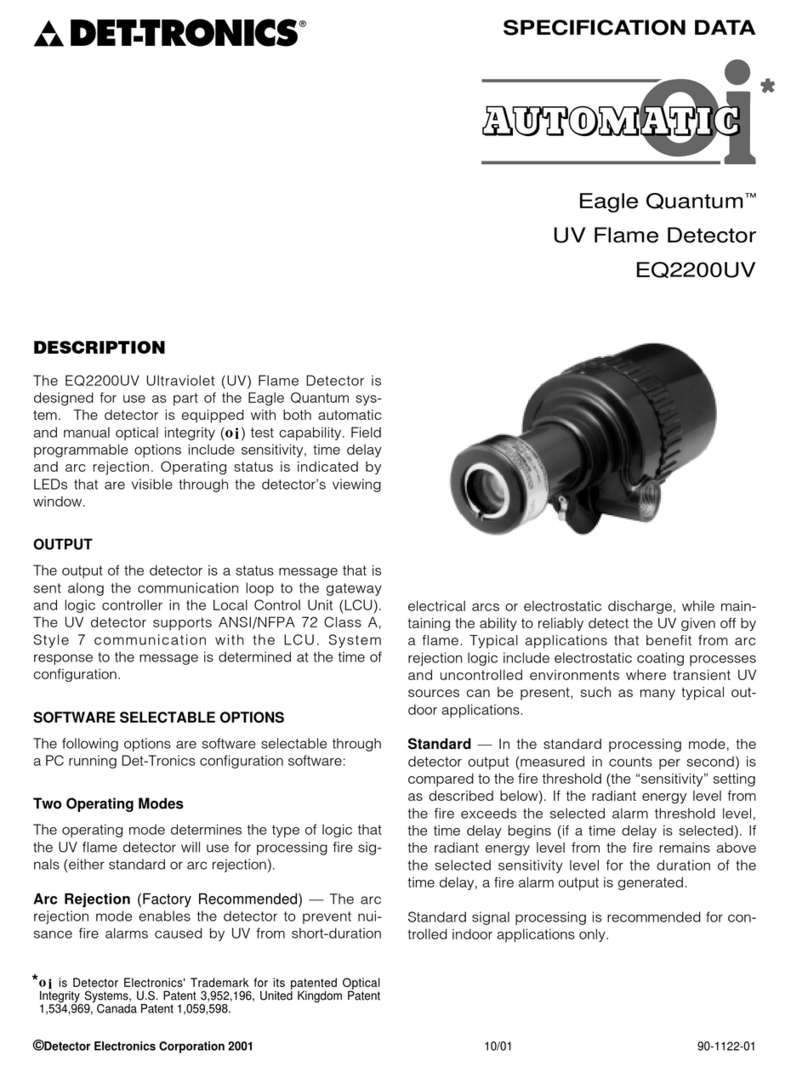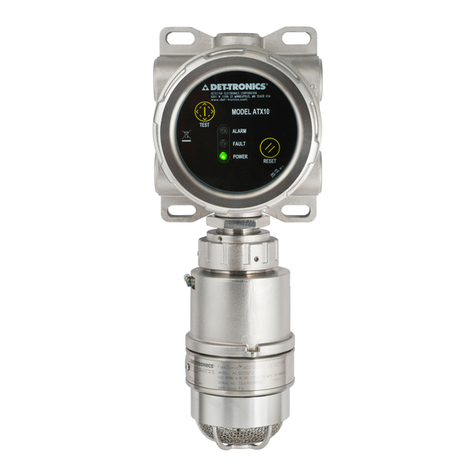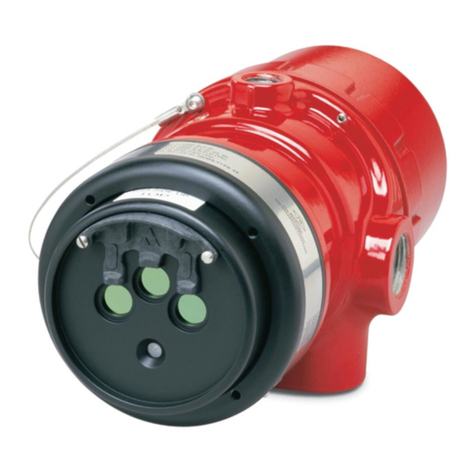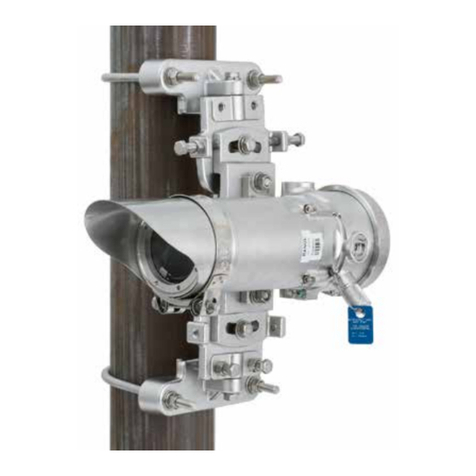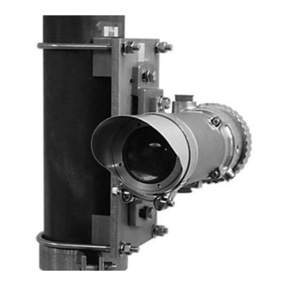Magnetic oi / Manual oi
The detector also incorporates both magnetic oiand
manual oifeatures that provide the same calibrated test
as the automatic oi, and in addition actuates the Alarm
relay to verify output operation for preventive
maintenance requirements. These features can be
performed at any time and eliminate the need for testing
with a non-calibrated external test lamp.
CAUTION
These tests require disabling of all extinguishing
devices to avoid release resulting from a
successful test.
The magnetic oitest is performed by placing a magnet
by the marked location (mag oi) on the outside of the
detector. The manual oitest is accomplished by
connecting the oilead (terminal 22) to power supply
minus via an external switch. The magnet or switch must
be held in place for a minimum of 6 seconds to
complete the test. Either of these test methods activates
the calibrated IR emitters. If the resulting signal meets
the test criteria, indicating that greater than half of the
detection range remains, the Alarm relay changes state,
the indicating LED changes to red, and the 4-20 mA
current output goes to 20 mA. This condition remains
until the magnet is removed or the switch is released,
regardless of whether the relays are set for latching or
non-latching operation
If less than half of the detection range remains, no alarm
is produced and a fault is generated. The fault
indication can be reset by momentarily applying the
magnet or manual oiswitch.
NOTE
Refer to the Appendix for FM verification of Det-
Tronics’ patented Optical Integrity oi™function.
COMMUNICATION
The X3302 is furnished with an RS-485 interface for
communicating status and other information with
external devices. The RS-485 supports MODBUS
protocol, with the detector configured as a slave device.
NOTE
The EQP model uses LON/SLC communication.
RS-485 communication is not available on the
EQP model.
DATA LOGGING
Data logging capability is also provided. Status
conditions such as normal, power down, general and oi
faults, pre-alarm, fire alarm, time and temperature are
recorded. Each event is time and date stamped, along
with the temperature and input voltage. Event data is
stored in non-volatile memory when the event becomes
active, and again when the status changes. Data is
accessible using the RS-485 port or the EQP controller.
INTEGRAL WIRING COMPARTMENT
All external wiring to the device is connected within the
integral junction box. The screw terminals accept wiring
from 14 to 24 AWG. The detector is furnished with four
conduit entries, with either 3/4 inch NPT or 25 mm
threads.
GENERAL APPLICATION
INFORMATION
RESPONSE CHARACTERISTICS
Response is dependent on distance, type of fuel,
temperature of the fuel, and time required for the fire to
come to equilibrium. As with all fire tests, results must
be interpreted according to an individual application.
See Appendix for fire test results.
IMPORTANT APPLICATION CONSIDERATIONS
In applying any type of sensing device as a fire
detector, it is important to know of any conditions that
can prevent the device from responding to fire, and also
to know what other sources besides fire can cause the
device to respond.
Welding
Arc welding should not be performed within 20 feet of
the detector. Gas welding mandates system bypass,
since the gas torch is an actual fire. Arc welding rods
can contain organic binder materials in the flux that
burn during the welding operation and are detectable
by the X3302. Welding rods with clay binders do not
burn and will not be detected by the X3302. However,
system bypass is always recommended, since the
material being welded may be contaminated with
organic substances (paint, oil, etc.) that will burn and
possibly trigger the X3302.
Artificial Lighting
The X3302 should not be located within 3 feet of
artificial lights. Excess heating of the detector could
occur due to heat radiating from the lights.
395-85761.4
